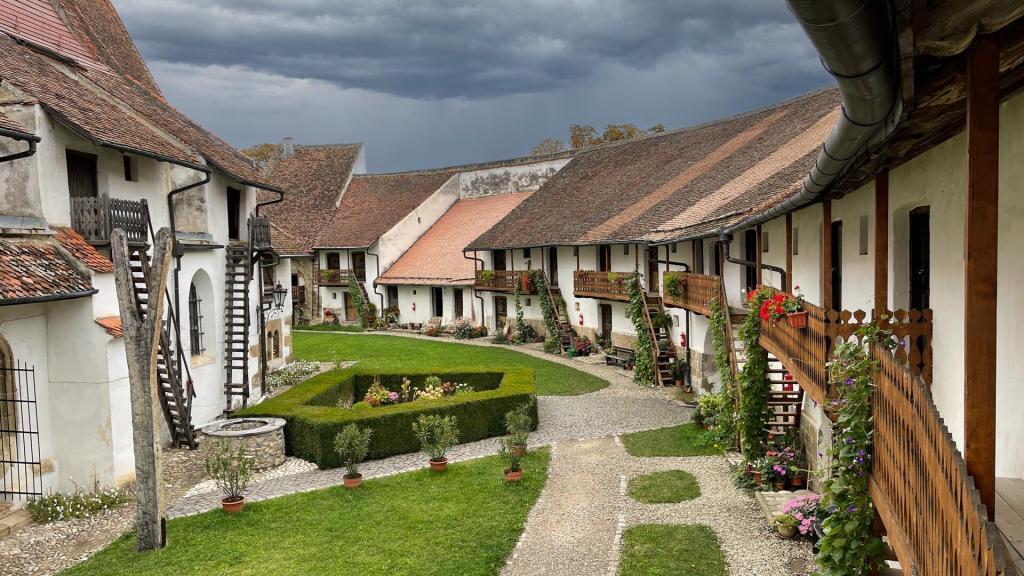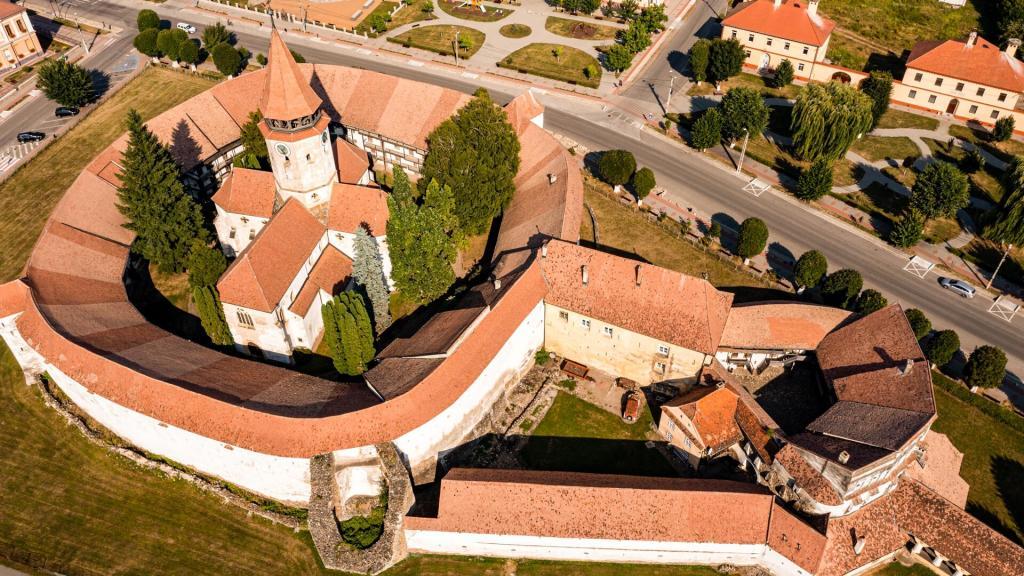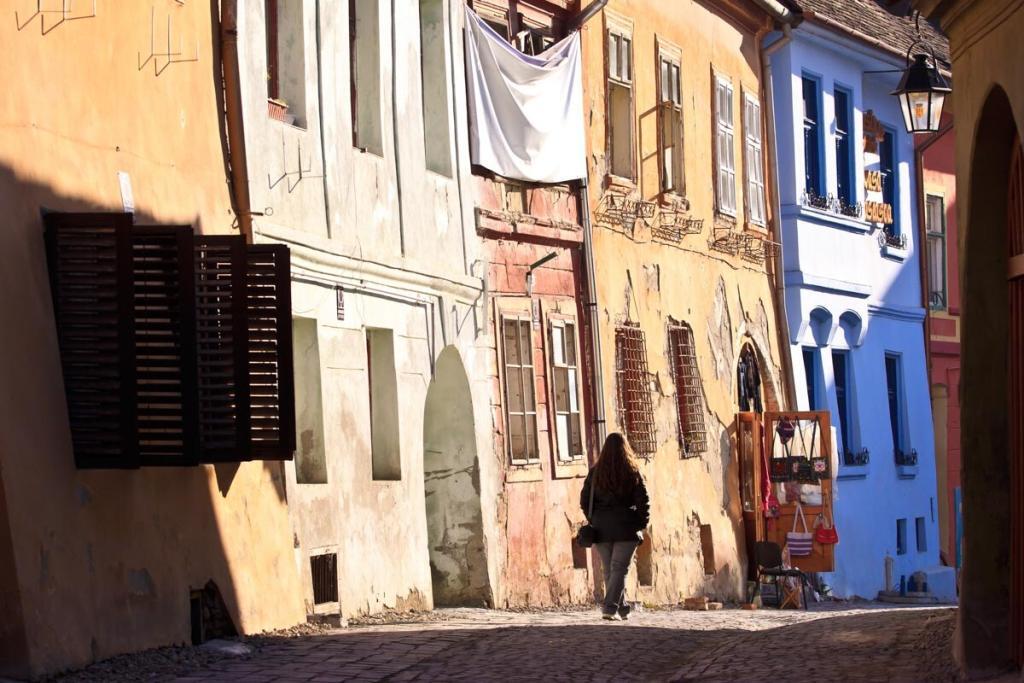On the last day, we focused on visiting two major UNESCO fortified churches – Biertan and Richis. We joined the fantastic guide Peter Suciu who did a great job walking us through the history of the place.
Once one of the best wine areas in Romania – the terraced hills speak for it – selling hundreds of thousands liters per year, is now half deserted. The hills are empty and the forest has started to conquer the former vineyards. Still, the area is so beautiful that many foreigners have started to buy houses in the area and moved there. I cannot but agree. Superb nature, rich history, rural traditions and amazing food are all the required ingredients that can transform the Saxon country in Romania’s Provence.
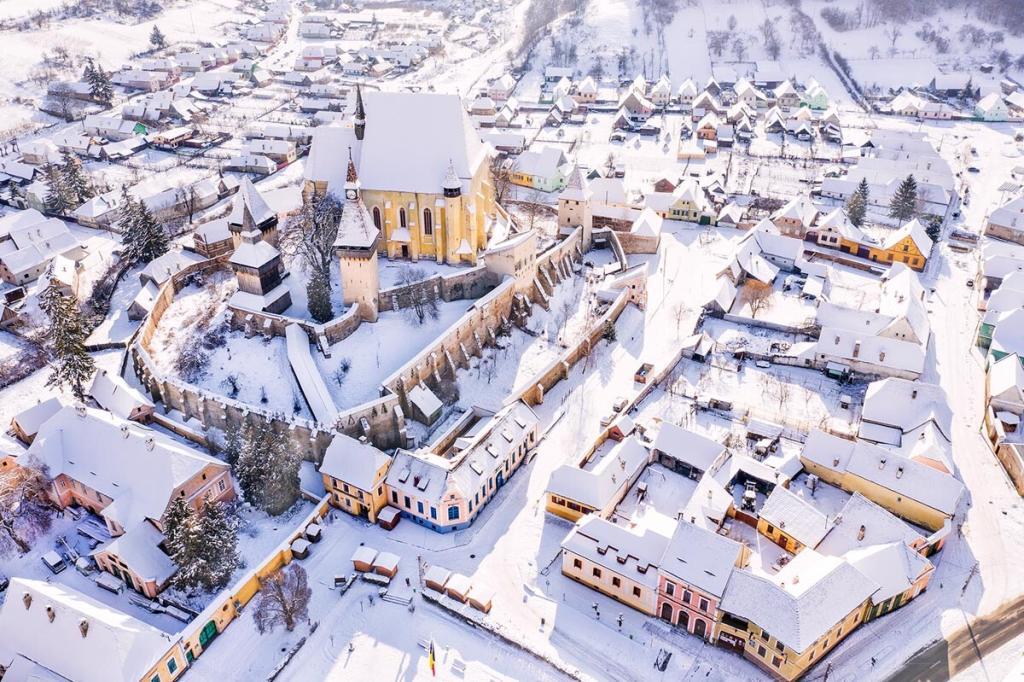
And indeed, Biertan looks fantastic with its fortified church on the top of the hill, dominating the colorful village. For almost 300 hundred years, Biertan was the seat of the Saxon Evangelical bishops of Transylvania – as documented by the Bishops Tower gravestones. This coincided with its greatest prosperity, at the time being the richest town in the area. Almost all the houses in Biertan (and in its neighbor Richis) have two entrances, one for the house, the other for the cellar. The wine was being sold in hundreds of barrels directly in the street.
Everything revolved around the fortified church, which was surrounded by three concentric walls each 10 meters high. They were supposed to protect the villagers against invaders – which were plenty in the medieval times, given how rich the area was.
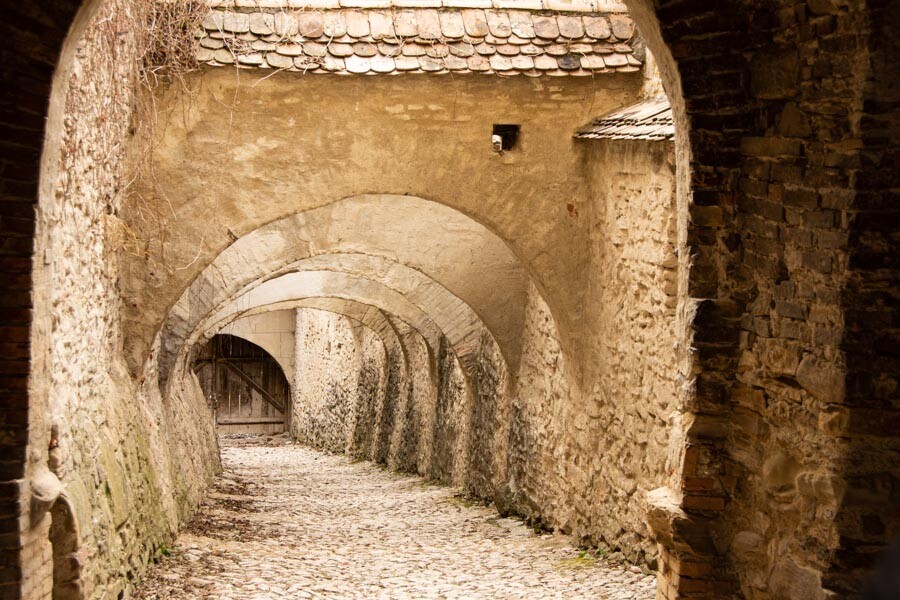
In the center of the fortification is the old church, surrounded by defense towers. Its 500 years old lock with its 19 points deadbolt is still considered a marvel of medieval engineering, getting numerous prizes abroad and the 500 years old gothic altar with its 28 painted panels is the greatest in Romania.
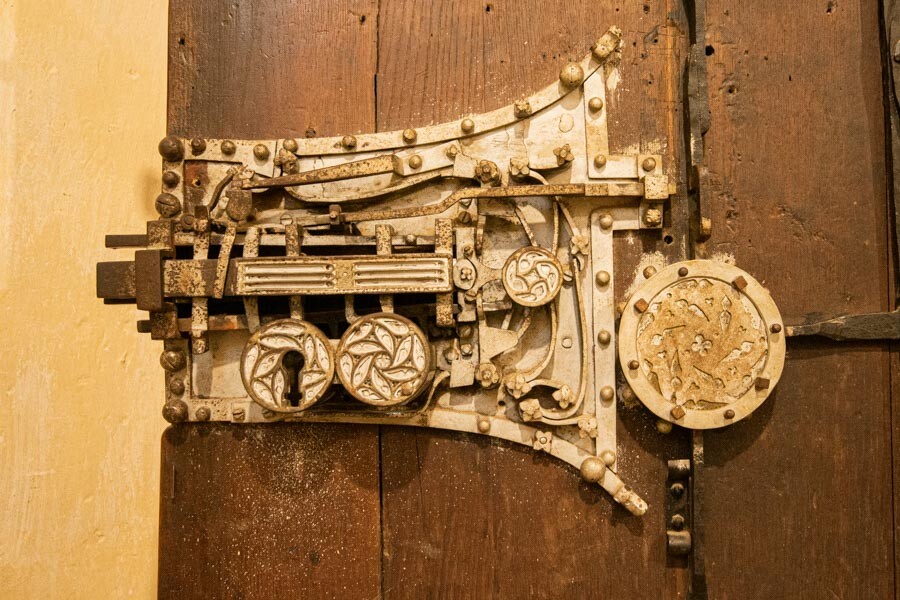
One very interesting detail is the “Marriage Prison” room which was designed to discourage the divorce by forcing the couples to share the space – no more than 15 square meters – for 6 weeks. They had one bed, one plate, one spoon, one table and one chair, thus being forced to discuss and agree on how to share them. The thinking was that by learning to discuss, agree and share, they can save their marriage. And it seems to have been successful – the records say there was only one divorce in the 300 years this method was used.
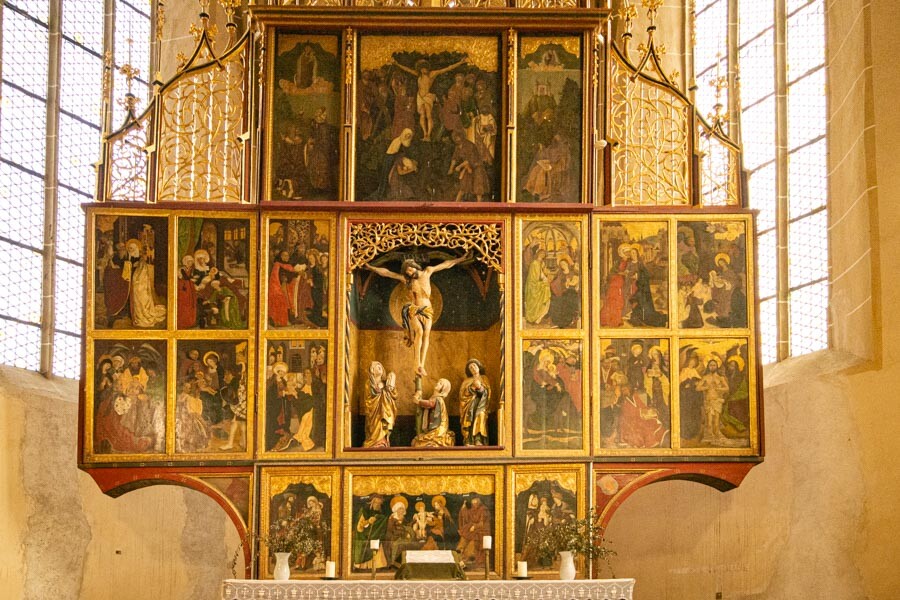
Richis has a similar story with Biertan. Almost deserted after the Saxons left for Germany, it gradually repopulated and now has more than 20 families from Western Europe permanently living there in addition to the Romanians and Gypsies that filled in the space.
The church was even more interesting – Peter was really fired up explaining about the cistercian monks that built it and inserted (they were playing, he said) old celtic details like Grunneman (green man) in a Catholic church, next to Jesus imagery. I would definitely have missed that if I were by myself, but Peter pointed to all the little details.

The funniest and most relevant detail about the old community that lived in this area, came also from Peter. He had the story from Johan Schaas, the last Saxon in Richis (now over 90 years old and going strong), who was taking care of the church. There is a chair in the church which was reserved to a jury, an honest man, chosen from the community, whose role was to certify if a dead person was dead for natural causes or if it was killed. He was the medieval equivalent of a forensic doctor. Alex asked if there was any case of somebody bribing the jury to lie about a crime. “Bribing?” Peter said. “That was an even worse crime. Bribe did not exist in that community for hundreds of years. Trust and honesty were everything for them.”

